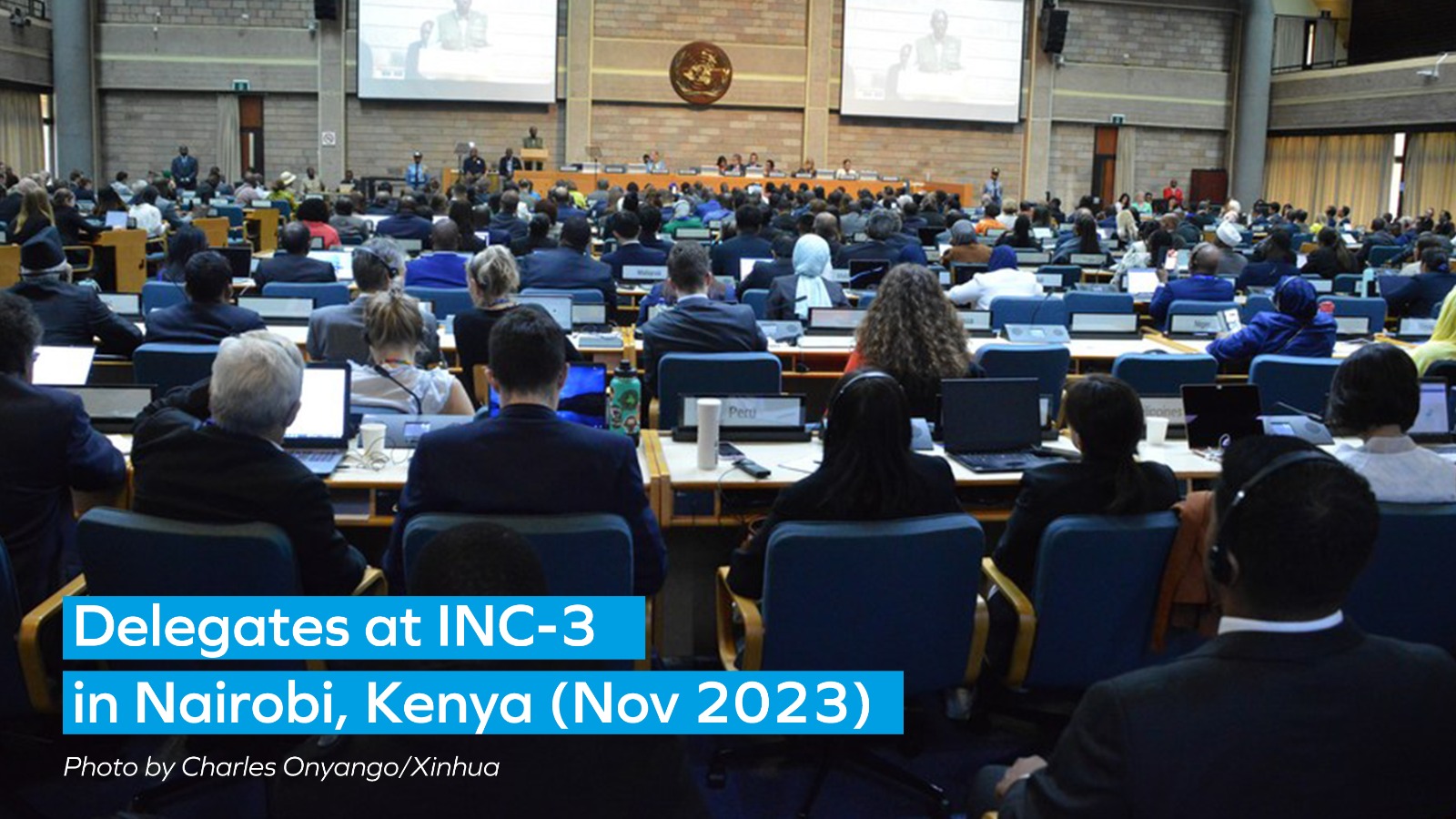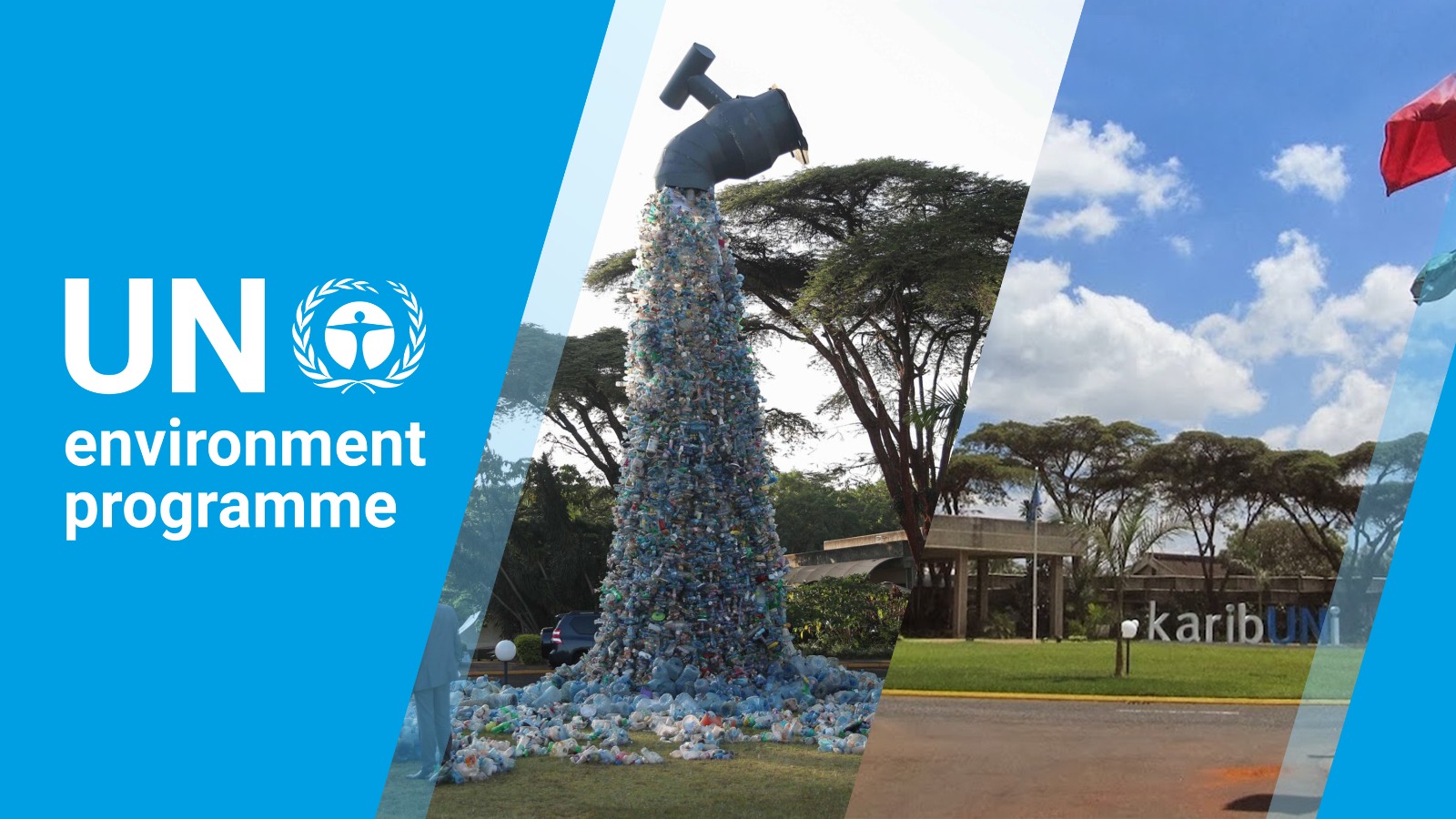
As a leading manufacturer of verified rPET packaging, AVI Global Plast has a strong interest in the ongoing global negotiations by the Intergovernmental Negotiating Committee (INC), aimed at establishing a legally binding treaty to combat plastic pollution. Following the conclusion of the third round of talks last month, now is an apt time to analyse the implications for responsible packaging production.
At the heart of the Global Plastics Treaty lies the world’s deepening plastic waste crisis. However, single-use protective plastic packaging remains indispensable for ensuring food safety across global supply chains. This presents a dilemma for policymakers – how to promote circularity without compromising critical functionality.
So, how can UN Member States, currently engaged in negotiating this international agreement on plastics, effectively navigate the challenges and opportunities presented by the Global Plastics Treaty? Here’s our perspective.

Mandatory recycling targets and infrastructure investment
Around 140 countries support legally enforceable recycling goals as one of the solutions to plastic pollution, which AVI wholeheartedly welcomes. India itself recycles over 90% of its PET waste, outperforming many developed economies, according to studies. However, the Global Plastics Treaty should also prioritise building digitised waste tracking systems and sorting facilities across high-leakage geographies globally.
Standardising food-contact and recycled content regulations
Creating policy incentives for recycled plastic adoption hinges on harmonising food-grade approvals worldwide. Comprehensive regulations on acceptable PCR (post-consumer recycled) levels for different applications will enable wider supply security. At AVI, our rPET punnets comply with EFSA and US FDA benchmarks for produce packaging. Global alignment of such standards will support resin producers with increased demand.

Rethinking design around reuse models
While most Global Plastics Treaty negotiations focus on waste management, true circularity requires a lifecycle view spanning production, use and after-use. As manufacturers of up to 100% rPET packaging, we have seen first-hand how PCR integration, downgauging, and packaging compositions with widely recycled materials can support a circular economy.
Policy emphasis must shift towards building recycling and reuse infrastructure before considering material restrictions. With prudent collaboration between producers, brands and end-users, single-use thermoformed packaging, for instance, can also evolve to serve multi-cycle applications through tray-to-tray recycling.
Opportunities amidst transitions
The Global Plastics Treaty undoubtedly signals challenging business transitions ahead. However, it equally presents packaging companies with opportunities for leadership through strategic investments. Advancing recycling and traceability capabilities while reimagining delivery models will define the competitive edge going forward.
At AVI, the United Nations’ Sustainable Development Goal 12, titled ‘responsible consumption and production’, has been integral since the company’s inception decades ago. We are ready with rPET thermoformed packaging verified by Intertek and ISCC PLUS with end-to-end traceability, and look forward to integrating certified ocean-bound plastic into our supply chain. With the right product and process innovations, concerned stakeholders across the plastics value-chain can unite to restore balance throughout its lifecycle.

https://auctionwheels.info/lots/39556289
Cargo delivery from China is trustworthy and fast.
Our company delivers flexible solutions for enterprises of any size.
We handle all logistics processes to make your operations smooth.
air express shipping from china
With direct shipments, we secure timely delivery of your packages.
Clients appreciate our professional team and competitive rates.
Choosing us means assurance in every delivery.
В Telegram появилась функция звезд.
Теперь люди могут выделять важные чаты.
Это позволяет быстро открывать нужную заметку.
купить звезды в телеграм дешево
Функция комфортна для работы.
Благодаря этому легко зафиксировать ключевые фразы.
Такой инструмент сохраняет ресурсы и делает общение проще.
В приложении Telegram появилась функция звёзд.
Теперь люди могут помечать важные сообщения.
Это позволяет быстро находить нужную заметку.
купить 50 звезд в тг
Функция полезна для ежедневного общения.
Благодаря этому легко зафиксировать ключевые моменты.
Такой инструмент бережёт нервы и делает общение быстрее.
Spribe�s Aviator game download link � safe & verified
It agree, very good message
awesome
https://www.finnishsportsagency.com/findycarfi
Выбор профессиональной техники — ответственный шаг в развитии красоты.
Для начала стоит уточнить потребности и направления, которые вы планируете проводить.
Необходимо изучить документы и качество выбранного оборудования.
Комментарии опытных специалистов помогут сделать осознанный выбор.
Бьюти Инструмент
Также следует проанализировать функциональность и эргономику эксплуатации.
Начальная оценка оборудования помогает понять комфорт работы.
Стоит также проанализировать стоимость и сервисное обслуживание.
Взвешенный выбор косметологического оборудования позволит усилить качество процедур.
Индивидуалки — это неповторимые личности, которые отстаивают свою индивидуальность.
Они предпочитают к осознанному подходу в общении.
Такие девушки часто обладают четким характером и ясными жизненными установками.
Они открыто выражать свои мысли.
https://rostov.spaxam.net/
Разговор с ними обычно получается осмысленным.
Они способны слушать собеседника и выстраивать искренние отношения.
Такие девушки заряжают окружающих своей аутентичностью.
Они следуют своим курсом, не подстраиваясь под навязанные ожидания.
Независимые девушки — это неповторимые личности, которые отстаивают свою независимость.
Они выбирают к продуманному подходу в жизни.
Такие девушки нередко обладают независимым характером и четкими жизненными целями.
Они смело показывать свои мысли.
https://spaxam.net/
Общение с ними всегда получается насыщенным.
Они умеют воспринимать собеседника и выстраивать искренние отношения.
Такие девушки заряжают окружающих своей подлинностью.
Они движутся своим маршрутом, не подстраиваясь под внешние ожидания.
Здесь размещена увлекательная и ценная данные по разнообразным вопросам.
Читатели могут найти решения на важные вопросы.
Материалы размещаются регулярно, чтобы каждый посетитель могли получать свежую подборку.
Простая организация сайта способствует быстро отыскать нужные разделы.
порно молодые
Большое количество рубрикаторов делает ресурс интересным для разных посетителей.
Любой сможет найти материалы, которые интересуют именно ей.
Присутствие практических рекомендаций делает сайт ещё более полезным.
Таким образом, этот ресурс — это надёжный проводник актуальной информации для любого пользователей.
Актуальное медицинское оборудование играет важную роль в диагностике и поддержке пациентов.
Больницы всё чаще используют передовую аппаратуру.
Это даёт возможность докторам ставить быстрые оценки.
Актуальные приборы обеспечивают комфорт и для людей, и для медиков.
https://webmastersitesi.net/konular/kakie-imenno-chastnye-kliniki-vy-obychno-vybiraete-v-moskve.25395/
Развитие высоких технологий помогает качественное восстановление.
Часто устройства имеют опции для детального мониторинга состояния здоровья.
Специалисты могут своевременно реагировать, основываясь на данных аппаратуры.
Таким образом, новейшее медоборудование усиливает уровень медицины.
online phone number canada
Modern websites for adult audiences offer a range of interesting opportunities.
These sites are designed for social interaction and sharing personal interests.
Users can discover others who enjoy the same goals.
A lot of of these sites encourage safe interaction and positive communication.
https://tminews.info/lifestyle/anonymous-sex-exploring-the-niche-in-adult-entertainment/
The interface is usually intuitive, making it easy to use.
Such platforms help people to express themselves in a relaxed online environment.
Privacy remains an important part of the user experience, with many sites providing moderation.
Overall, these platforms are created to support adult communication in a safe digital space.
I am final, I am sorry, but this variant does not approach me.